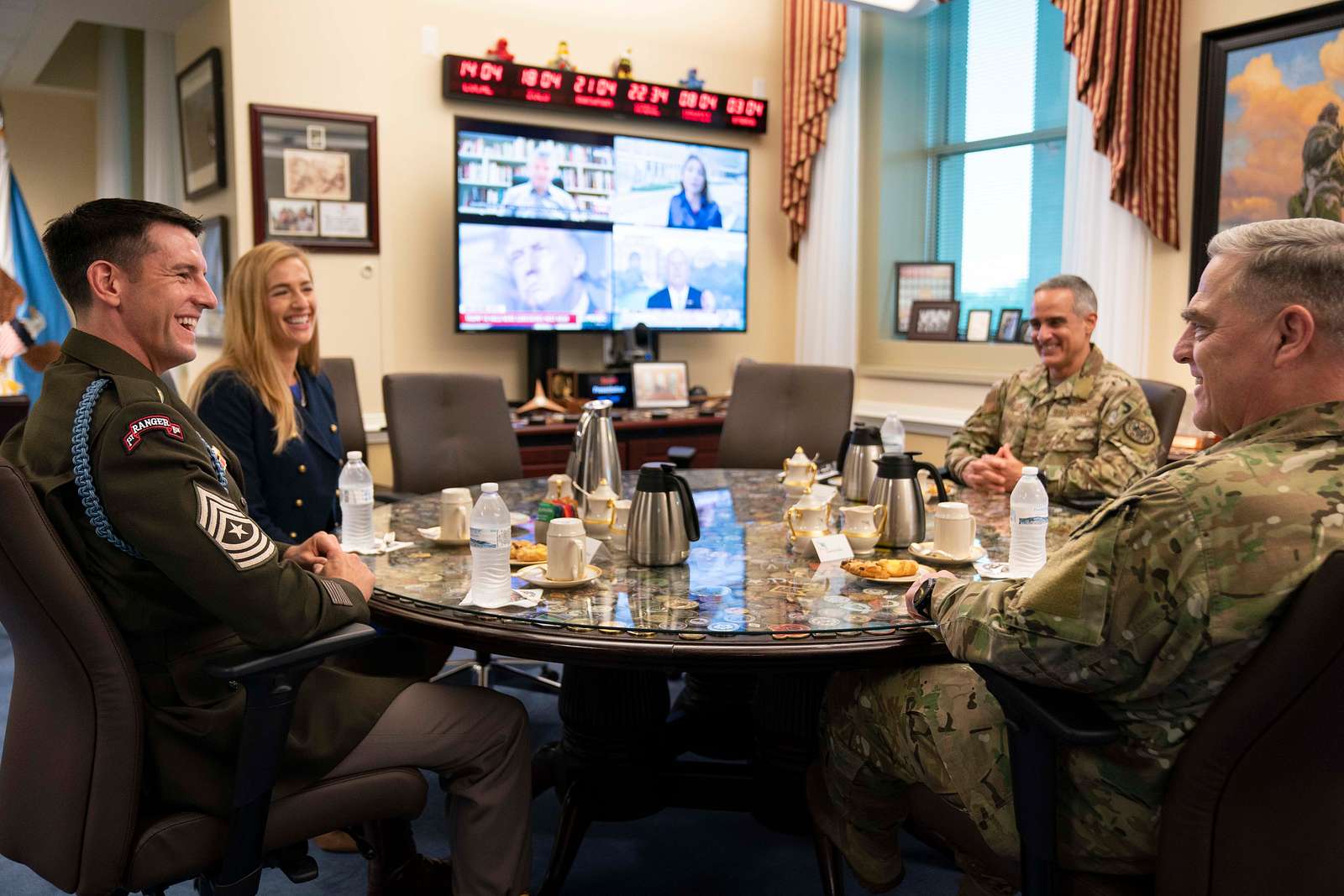Seac Military - In: Pages with broken file links, All articles with unsourced claims, Articles with unsourced claims since November 2014,
Senior Private Advisor to the Chairman is a military position in the United States Department of Defense and is the most senior noncommissioned officer or chief of staff in the United States Armed Forces. The Chairman of the Joint Chiefs of Staff appoints the SEAC to deal with matters related to military personnel in the most senior positions in the Department of Defense. As such, the SEAC is a senior advisor to the Chairman of the Joint Chiefs of Staff and serves at the pleasure of the Secretary of Defense. SEAC's exact duties vary by president, though he typically spends a lot of time traveling around the Department of Defense, observing training and talking with service members and their families. The normal term of office is four years, which runs concurrently with the head. The first member of this office was William Gainey. On September 29, 2011, Chairman of the Joint Chiefs of Staff General Martin Dempsey administered the oath of office to Master Sergeant Brian B. Battle, USMC. Battaglia becomes only the second member and the first Marine to hold the position.
Seac Military

Although Army and Marine Corps headquarters, from battalions and regiments to divisions, corps, army headquarters and higher, traditionally each has a chief; both Navy and Coast Guard ships traditionally had a commander or ship's chief; the national headquarters of the services had no other position at all. The exception was the Marine Corps, where from 1801 to 1946 there was a sergeant major, and from 23 May 1957 a sergeant major of the Marine Corps, as senior advisor to the Commandant of the Marine Corps.
Army Command Sgt. Maj. John W. Troxell, Senior Enlisted Advisor To The Chairman (seac) Of The Joint Chiefs Of Staff, Talks To Airmen, Soldiers, Marines And Sailors About Issues Concerning The Enlisted
Other services emerged during the Vietnam War, creating positions such as sergeant major of the Army in 1966, chief petty officer of the Navy and chief petty officer of the Air Force in 1967, and chief petty officer of the Coast Guard in in 1969. The positions are collectively or collectively referred to as "Senior Engagement Advisors" ("SEAs"). Only one Soldier, Sailor, Marine, Airman, and Coast Guardsman may hold this rank at any time (although they also hold the rank after retirement pursuant to 10 USC § 1406(i)(1); in addition, the distinction position is not considered to prevent a technical overlap for several weeks while the recently "retired" SEP legally remains on active duty for the duration of accrued leave known as "transition leave"). Each advises their service chief (Commandant of the Marine Corps, Chief of Staff of the Army, Chief of Naval Operations, Chief of Staff of the Air Force, and Commandant of the Coast Guard) and other senior service leaders on all matters, making decisions that affect service members and their families, and often are invited to testify before Congress.
The position of Senior Advisor to the President was created in 2005 under the leadership of General Peter Pace. The newly created position was created to provide advice to the Chairman on all issues related to servicemen in a joint environment. When Admiral Michael Mullen became chairman of the Joint Chiefs of Staff, he consulted with the services' SEAs and decided not to appoint an SEA to his office. A press release from his office said it was not about General Pace, just that he felt the office was unnecessary. Mullen's successor, General Martin Dempsey, reinstated the post in 2011.
Command Sergeant Major William Gainey, USA, 1st Senior Advisor to the President (October 1, 2005 – April 25, 2008).
General Peter Pace selected Army Sergeant William Gainey to serve as the first Senior Advisor to the President ("SEAC"), effective October 1, 2005. . From May 9, 2003 to September 30, 2005, he served as the command sergeant major of III Corps and Fort Hood, Texas. He served as Senior Advisor to the President until his retirement on April 25, 2008.
Seac Visits Air Force Recruiting Service
The SEAC provides oversight in any area designated by the President. The SEAC is the SEAC Chairman's spokesperson for all services. In some cases, the SEAC represents all service members and combat teams in meetings with military leaders, the civilian community, and military leaders from other countries. SEAC is not in the immediate chain of command of SEA forces or combatant commands; however, it is in the NCO's communications chain. The SEAC is the chief's liaison to and/or to the SEA services and combatant commands. During site visits, SEAC identifies problems and issues that may affect services as a whole. When a problem is identified, he works with services to find a common solution and help integrate the solution across services where possible. Recently, senior engagement advisor (SEA) positions have been created for combatant teams that are combined and include service members.
The chief's senior enlisted adviser and the other five COS are at the pay grade of E-9, as are all sergeants and sergeants, command sergeants, and sergeants majors; however, pursuant to 37 U.S.C. § 1009, Schedule 8, the SEAC base salary is $7,489.80 per month ($89,877.60 per year), regardless of the officer's length of service. By comparison, one in two E-9s, even with a maximum of forty years of service, will receive $7,195.80 per month.
In addition to his base salary and regular tax-free allowances, the SEAC and other SEAs are entitled to a special tax-free allowance of $2,000.00 per year pursuant to 37 U.S.C. § 414(c).

Seac scuba, seac smart bcd, seac drysuit, seac goggles, seac pro 2000, seac, seac dx200, seac shout fins, seac fins, seac 5mm wetsuit, seac dive bag, seac diving equipment
0 Comments